How European Chefs Curate Amazing Black and White Kitchens
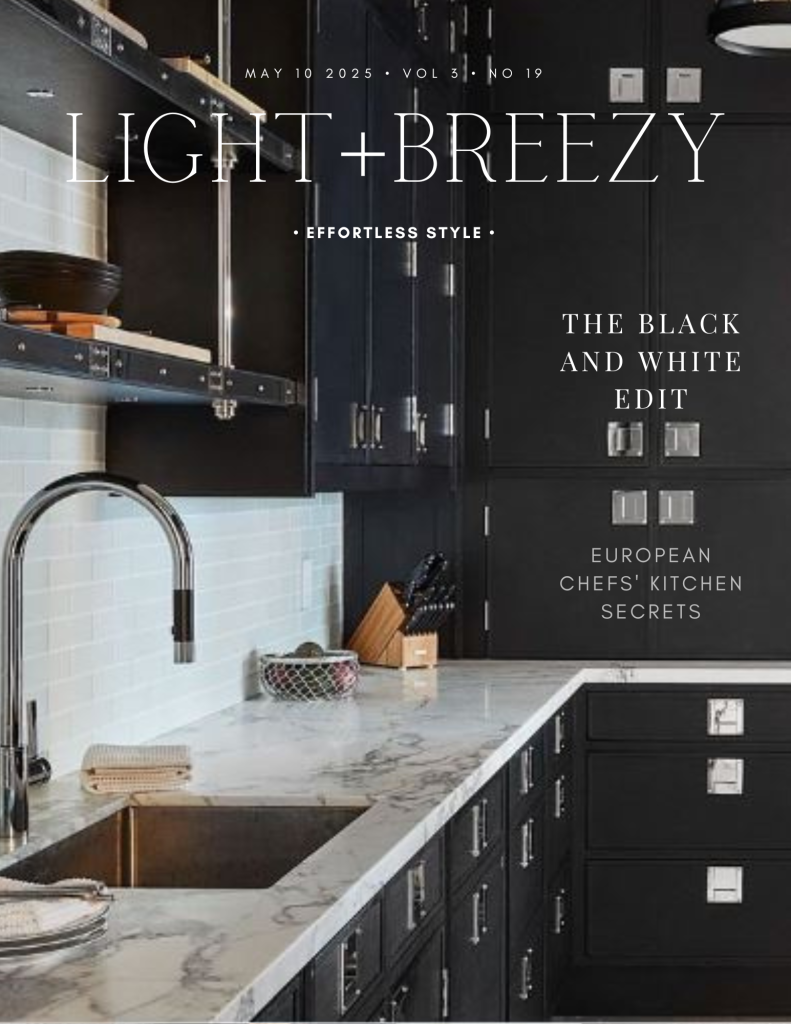
The Monochrome Magic: How European Chefs Create Extraordinary Black and White Kitchens
Within the realm of culinary perfection, the workstation is just as vital as the craft itself. European cooks have long realized that the architecture of a kitchen strongly affects the cooking experience as well as the final presentation. Far from a design trend, the black and white look has strong roots in professional European kitchens where artistic expression meets practical need.
The Philosophy of Contrast
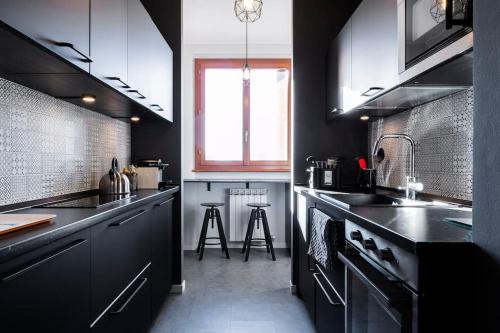
“The kitchen is my canvas; black and white creates the ideal backdrop for food to be the true star,” Milan-based chef Alessandra Moretti says. European cooks see this difference as a philosophical statement about their cuisine, unlike the American approach that sometimes considers black and white as only a color scheme.

This duality represents the balance of technique and creativity, tradition and innovation. In European culinary circles, a black and white kitchen isn’t about following trends—it’s about creating a timeless space where food’s natural colors can shine without competition.
Unexpected Materials
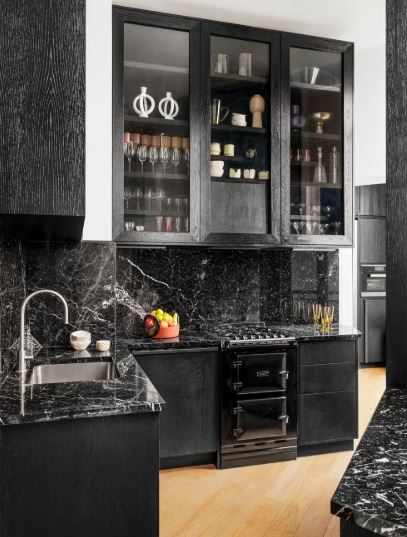
European chefs consistently surprise with their material choices, abandoning conventional thinking about what belongs in a kitchen.
“Marble isn’t just for countertops,” notes Barcelona-based chef Miguel Torres, who incorporates dramatic black marble wall panels in his kitchen. “The veining creates natural artwork that changes with the light throughout the day.”
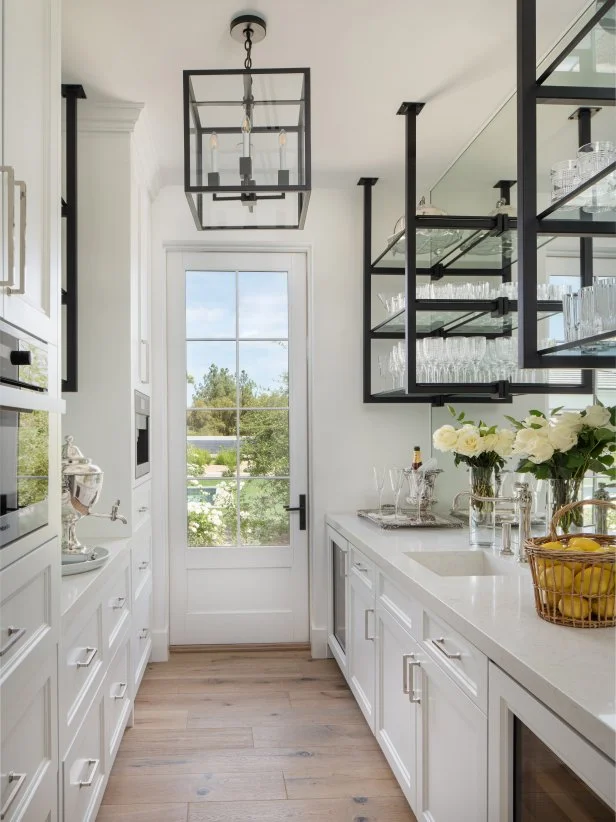
Other unexpected applications include:
- Blackened steel used for open shelving rather than hidden structural elements
- White chalk-finished wood that creates a matte, touchable surface resistant to fingerprints
- Handcrafted black ceramic tile with subtle texture variations that capture light differently throughout the day
- White concrete flooring sealed with natural waxes for a living surface that develops character over time
The Fifth Wall
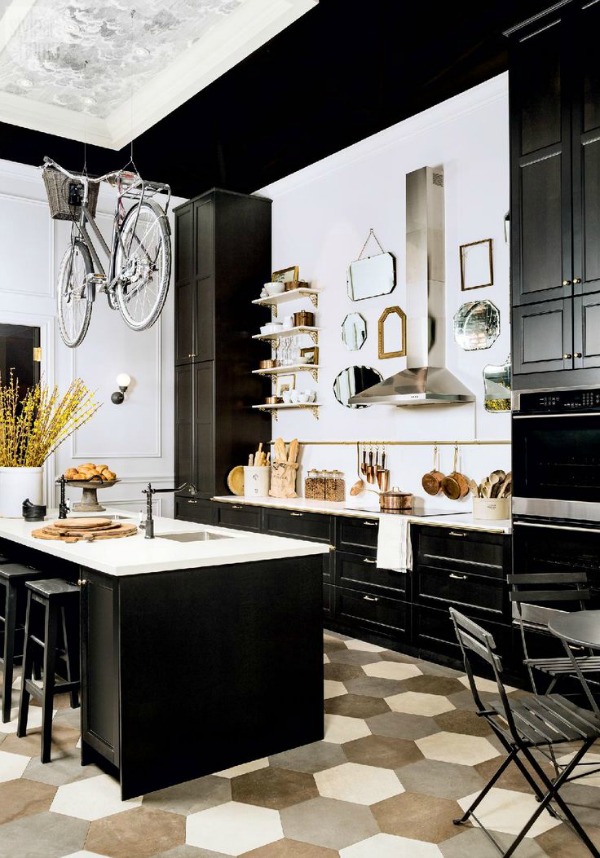
While American kitchens often neglect the ceiling, European chefs consider it essential to the black and white equation.
“Americans forget the fifth wall,” says Parisian chef Jean-Pierre Langlade. “A black ceiling with carefully placed lighting creates intimacy and draws attention to what’s happening at counter level.”
Rather than viewing the ceiling as an afterthought, European chefs use this surface strategically—sometimes painting it black to visually lower the space for coziness, or in gleaming white to reflect light onto work surfaces.
Negative Space as Design Element
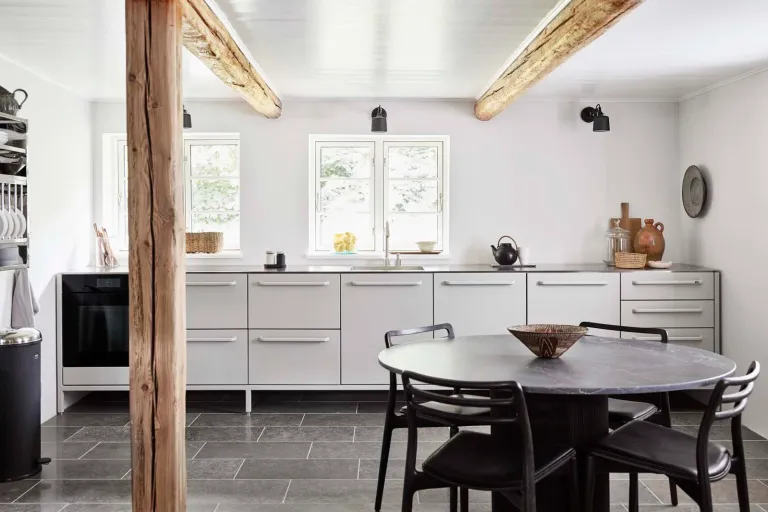
Perhaps most distinctive is the European appreciation for emptiness—what isn’t there matters as much as what is.
“Americans fill every corner,” observes Copenhagen-based chef Lise Juul. “In Denmark, we understand that negative space allows both the eye and the mind to rest.”
This translates into:
- Asymmetrical arrangements where one wall might remain completely bare
- Open shelving with carefully curated items and plenty of empty space
- Strategic “breathing room” between elements rather than continuous cabinetry
- Single dramatic elements given space to stand alone rather than competing with many features
Light as Ingredient
European chefs treat light as an essential ingredient in their kitchens. Rather than uniform overhead lighting, they layer illumination to create mood and highlight work areas.
“Light changes everything about how food appears,” explains Athens-based chef Nikos Pavlos. “I adjust my lighting throughout the day just as I would adjust seasoning in a dish.”
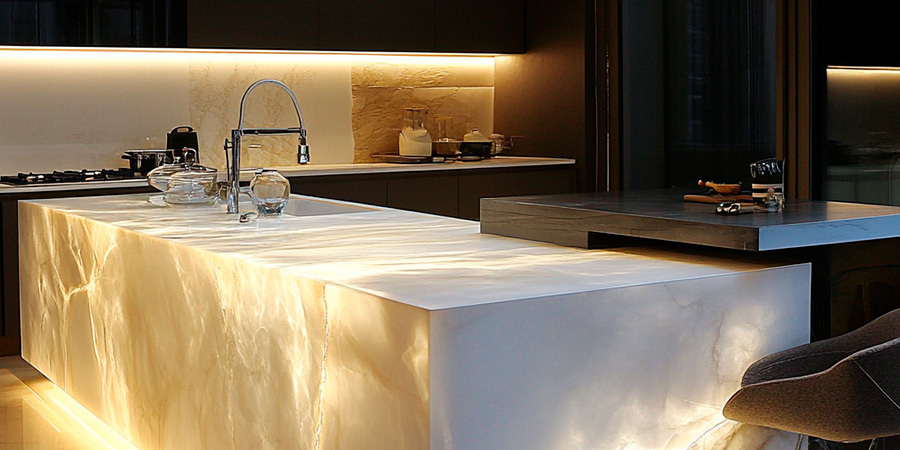
Innovative approaches include:
- Backlighting translucent white marble sections to create dramatic glowing features
- Light strips concealed along the underside of black countertops to make them appear to float
- Vintage industrial black metal light fixtures reimagined with modern LED technology
- Directional spotlights that can be adjusted to highlight specific work areas or dining spots
Texture Conversations
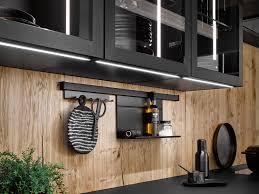
The most sophisticated European kitchens create what German chef Klaus Weber calls “texture conversations”—juxtapositions of tactile surfaces that enhance the sensory experience.
“In a palette limited to black and white, texture becomes your vocabulary,” says Weber. “Each surface should invite touch in a different way.”
This might include:
- Juxtaposing high-gloss black lacquer against rough-hewn white limestone
- Contrasting matte black chalk paint against polished white marble
- Mixing white plaster walls with blackened wood beams
- Pairing smooth black concrete counters with textured white tile backsplashes
The Heritage Factor
Unlike American kitchens that sometimes adopt black and white aesthetics without historical context, European chefs often incorporate elements that honor culinary heritage.

“My kitchen features the original iron hooks that held my grandfather’s copper pots,” says Lisbon-based chef Ana Oliveira. “Against white walls, they’re both functional and a connection to our family’s culinary past.”
Other heritage elements include:
- Antique black scales displayed as functional art
- Handwritten family recipes framed in simple black frames against white walls
- Vintage white enamelware collected over generations
- Black slate from historic buildings repurposed as countertops
Personal Expression Within Discipline
What makes European black and white kitchens truly special is how they balance disciplined design with personal expression.
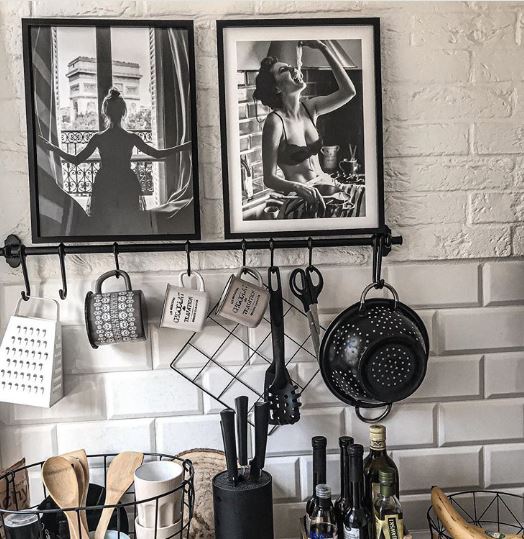
“Americans sometimes follow formulas,” notes one Vienna-based chef. “Europeans understand that even within the discipline of black and white, your kitchen must reflect who you are as a chef.”
This means every European chef’s black and white kitchen tells a unique story while maintaining the powerful contrast that makes these spaces so compelling. The most successful examples contain unexpected personal touches—perhaps a collection of black and white photographs from culinary travels, or a single vibrant ingredient like lemons displayed against a black background.
Creating Your Own European-Inspired Space
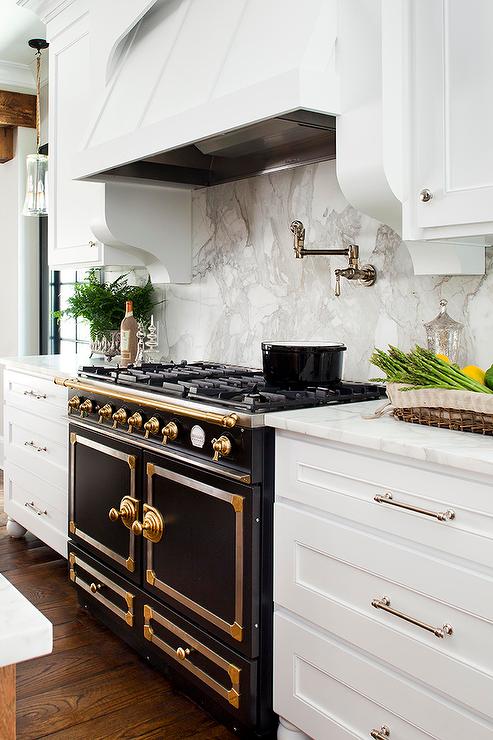
The European approach to black and white kitchens isn’t about spending lavishly, but about thoughtful choices. Even modest kitchens can adopt these principles:
- Focus on quality materials in smaller quantities rather than filling every space
- Create one dramatic focal point rather than many competing elements
- Consider how light plays throughout the day in your specific space
- Allow for some negative space rather than filling every available surface
- Choose items with personal meaning rather than generic decorative elements
By embracing these European principles, your black and white kitchen can become more than a fashionable design choice—it can be the backdrop for your own culinary story, a space that honors both tradition and your personal creative vision.
